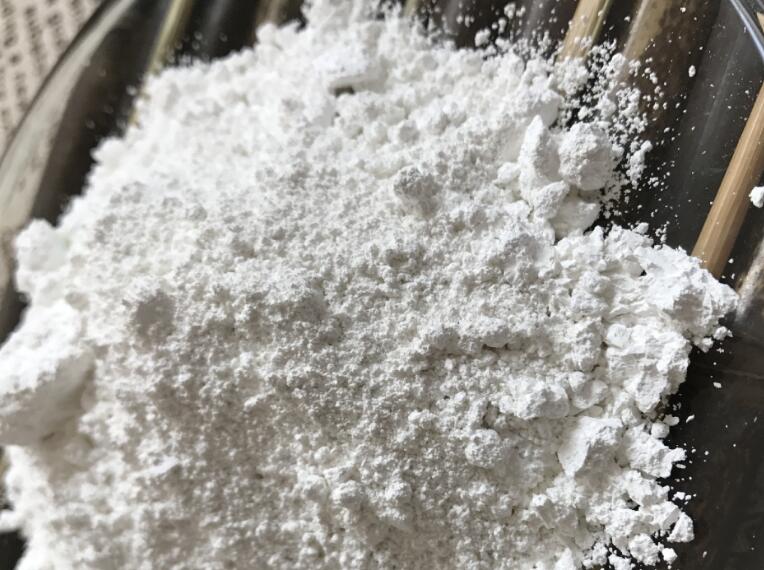Study on the rheological properties of flame-retardant EVA treated with magnesium hydroxide by silane

Magnesium oxide (Mg(OH)₂), as a halogen-free flame retardant, has been widely used in plastics, rubber and other materials due to its good flame retardant effect, non-toxic, smokeless, and non-corrosive characteristics. Ethylene-vinyl acetate copolymer (EVA) is a common thermoplastic elastomer with good flexibility and processing properties. However, the dispersion and interfacial compatibility of magnesium hydroxide in the EVA matrix are poor, which will affect its flame retardant effect and the mechanical properties of the composite material. Surface modification of magnesium hydroxide with a silane coupling agent can significantly improve its dispersion and compatibility in the EVA matrix, thereby improving the overall performance of the composite material.
Silane coupling agents are a type of compound with bifunctional groups. One end can chemically react with the hydroxyl group on the surface of the inorganic filler, and the other end can cross-link with the functional group in the polymer matrix, thereby strengthening the relationship between the inorganic filler and the polymer matrix. interface combination. In this study, magnesium hydroxide can be treated with silane to improve its dispersion and interfacial compatibility in the EVA matrix, thereby improving the flame retardant and mechanical properties of the composite material.
Experimental materials and methods
Experimental materials
Magnesium hydroxide (Mg(OH)₂): As a flame retardant.
Ethylene-vinyl acetate copolymer (EVA): as the base material.
Silane coupling agent: such as γ-aminopropyltriethoxysilane (APTES) or γ-glycidoxypropyltrimethoxysilane (KH-560).
Other reagents: such as deionized water, solvents, etc.
Experimental steps
Magnesium hydroxide modification:
Disperse magnesium hydroxide in deionized water and add an appropriate amount of silane coupling agent.
Stir for several hours at a certain temperature (such as 60°C) to allow a chemical reaction between the silane coupling agent and the surface of magnesium hydroxide.
Modified magnesium hydroxide is obtained through centrifugal separation, washing, drying and other steps.
Composite material preparation:
Mix modified magnesium hydroxide and EVA in a certain proportion.
Composite materials are prepared by melt blending to ensure uniform dispersion of magnesium hydroxide in the EVA matrix.
Rheological properties test:
Dynamic mechanical analysis (DMA) was performed using a rheometer at different temperatures and frequencies to evaluate the rheological properties of the composites.
Record the storage modulus (G'), loss modulus (G'') and complex viscosity (η*) of the composite material.
Other performance tests:
Mechanical properties: Evaluate the mechanical properties of composite materials through tensile testing, bending testing and other methods.
Flame retardant performance: The flame retardant performance of composite materials is evaluated through limiting oxygen index (LOI) test, vertical burning test (UL-94) and other methods.
Results and discussion
Rheological properties:
Storage modulus (G'): The dispersion of magnesium hydroxide in the EVA matrix after silane treatment is better, and the storage modulus of the composite material is significantly increased, indicating that the elasticity of the material is enhanced.
Loss modulus (G''): The addition of modified magnesium hydroxide caused the loss modulus of the composite to decrease slightly, which may be due to the improvement in interfacial compatibility that reduces internal friction.
*Complex viscosity (η)**: The complex viscosity of the modified magnesium hydroxide composite is lower than that of the unmodified composite within a certain frequency range, indicating that the rheological behavior has been optimized.
Mechanical properties:
The tensile strength and elongation at break of modified magnesium hydroxide composites are improved compared with unmodified materials, indicating that the improvement of interfacial compatibility improves the mechanical properties of the materials.
Flame retardant properties:
The limiting oxygen index (LOI) and vertical combustion rating (UL-94) of modified magnesium hydroxide composites are better than those of unmodified materials, indicating that the flame retardant performance has been significantly improved.
Surface modification of magnesium hydroxide with a silane coupling agent can significantly improve its dispersion and interfacial compatibility in the EVA matrix, thereby improving the rheological properties, mechanical properties and flame retardant properties of the composite material. This research provides new ideas and technical means for the development of high-performance flame-retardant EVA composite materials.








